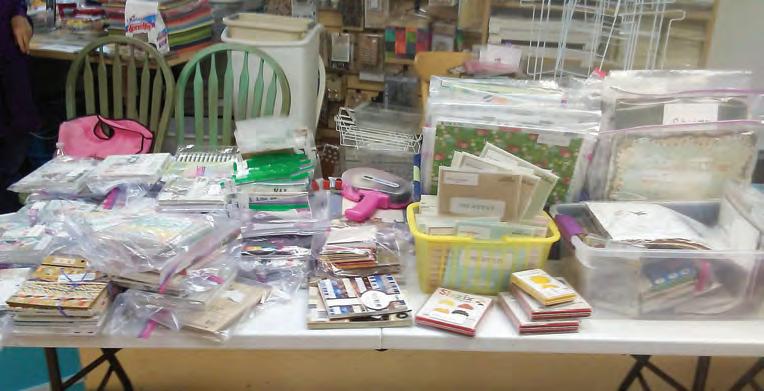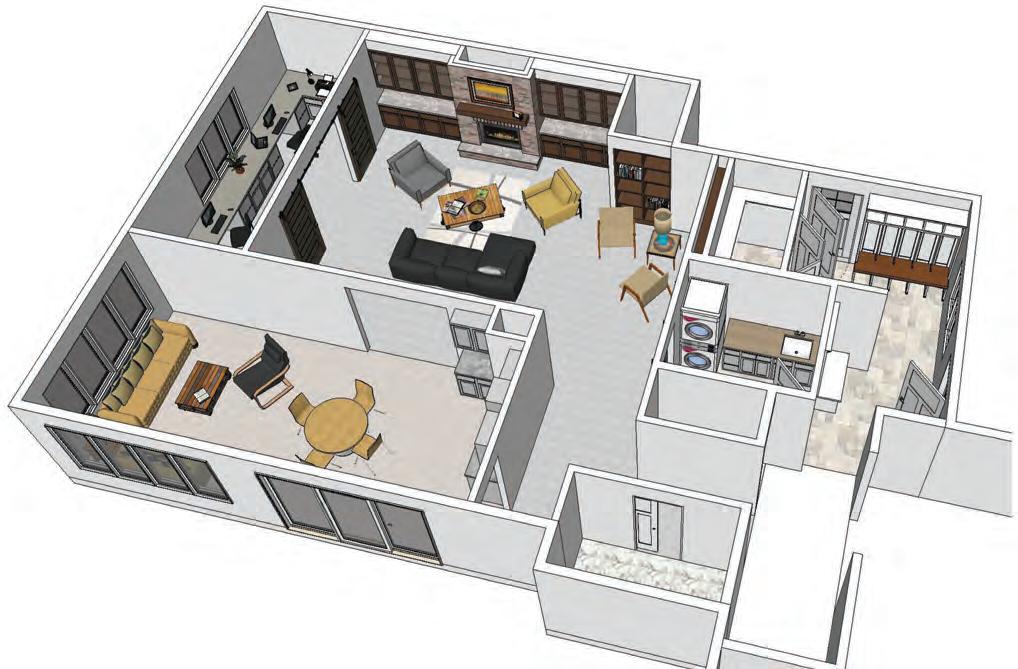B
ringing intangible concepts to visual life is the primary focus of a designer. This includes both abstract and concrete ideas. Creating visual aids to excite the customer about their project also excites the designer and proves to both parties that the design can, indeed, become a reality. Establishing trust with the client is one of the most important aspects of custom home design. Tailoring finishes and furnishings to someone’s specific tastes requires extensive communication between the client and designer. Overtime, a relationship of ideas develops and establishes this trust as the project progresses. One maSPONSORED BY jor reason to hire a designer is that they can The Design Element fully realize an image in their minds from 1711 Premier Drive using samples, textures, photos, colors, Mankato, MN etc. – before the space has become reality. 507.345.8708 But, the challenge still lies in conveying this mental image to the customer - which is where drawings, renderings, floor plans, and product documents come into play. At The Design Element we have a multitude of resources to accomplish this goal. We start with our existing samples of the actual products and, depending on the scale of the job, we may order in other options to assist the client in making final decisions. It’s not uncommon for drafters to add in details to plans when necessary using the selections specified by our designers. Oftentimes, a collaboration amongst multiple individuals is necessary to create accurate illustrations and truly bring a vision to life. Knowledge of building products, standards, codes, room functions, space planning, and current design trends all come into play. On the job experience is what allows a designer to create in real-time and bring form and function together for each project. The internet can also be a helpful source of information but is both a blessing and a curse. This statement could apply to a variety of situations in life, but it’s especially true for the design industry. In many ways it helps our jobs as designers. Our clients can see images of the latest interiors in every style and color imaginable. Bringing these images to your designer can be helpful to determine your likes and dislikes faster than ever before. On the negative side, many room designs are not feasible for your actual space or can be beyond the budget allowed. This is where someone with experience can assist in adapting your favorite images to the place you live. Applying personal taste to an interior can be a therapeutic process – often determining subconscious likes and dislikes as your designer dissects your pinned, tagged, dropped, emailed, texted, or linked digital photographs. Connecting similarities between seemingly disparate room scenes is not always a simple task and is time-consuming. Each client’s project is a puzzle that takes both an analytical and empathetic eye – deriving assumed function and meaning from your preferred visual style. As I mentioned above, establishing a good, open working relationship between a client and designer is the most important design tool. It is the nature of the business that you will be sharing some private and sometimes intimate information about your life with your designer. He or she needs to know how you live and what you love in order to make your house your home. Don’t be afraid to share your thoughts and to be honest. An experienced designer has undoubtedly heard it all before. It is also important to be flexible and open to new ideas and new ways of doing things. It is safe to assume that if you are undergoing a remodel or building a new home that you are not wanting a carbon copy of your existing dwelling. Sometimes change can be hard, but it can also be exciting and an improvement to your life. Keep in mind that your designer has gone through this process many times with different personalities. They may have ideas that have never occurred to you before. Being open to suggestion and putting some trust in your designer can allow for an outcome you never thought possible. Chances are that vision and experience are the tools you are looking for in a designer. Every project is a group effort. Each member of the team must work together in order to organize all the moving parts that is construction. Open communication and putting some trust in each other, homeowners and professionals, is the best way for everyone to reach the common goal of a beautifully built and designed home.
From thought to
Ian Laird
Megan Rolloff
Ian is a Lighting Specialist and designer at The Design Element, located in the Mankato Design Center. He can help you with all your lighting and design needs from planning to product selection.
Megan is a designer at The Design Element in the Mankato Design Center. She can help you with all your design needs from planning to product selection.
Follow us on
w w w. s o u t h e r N m I N n SCENE. c o m
| M A RCH 2 0 2 0
17












